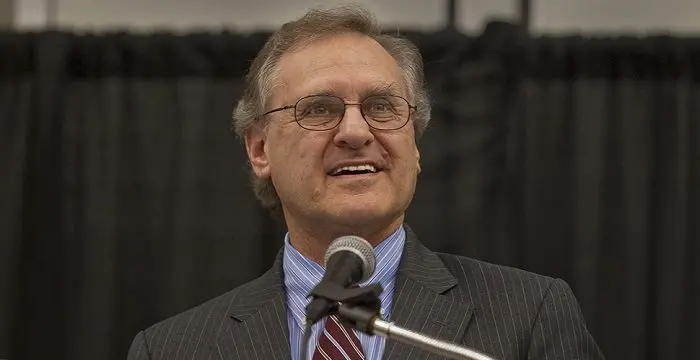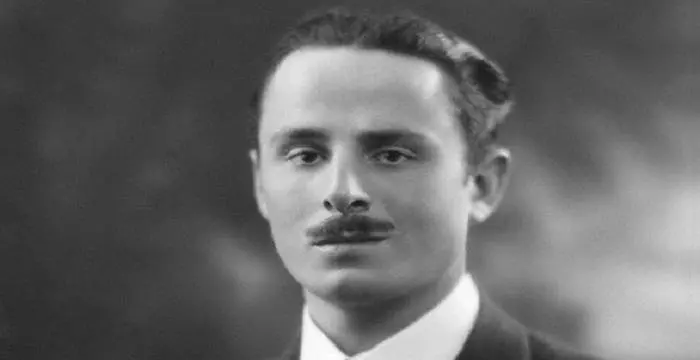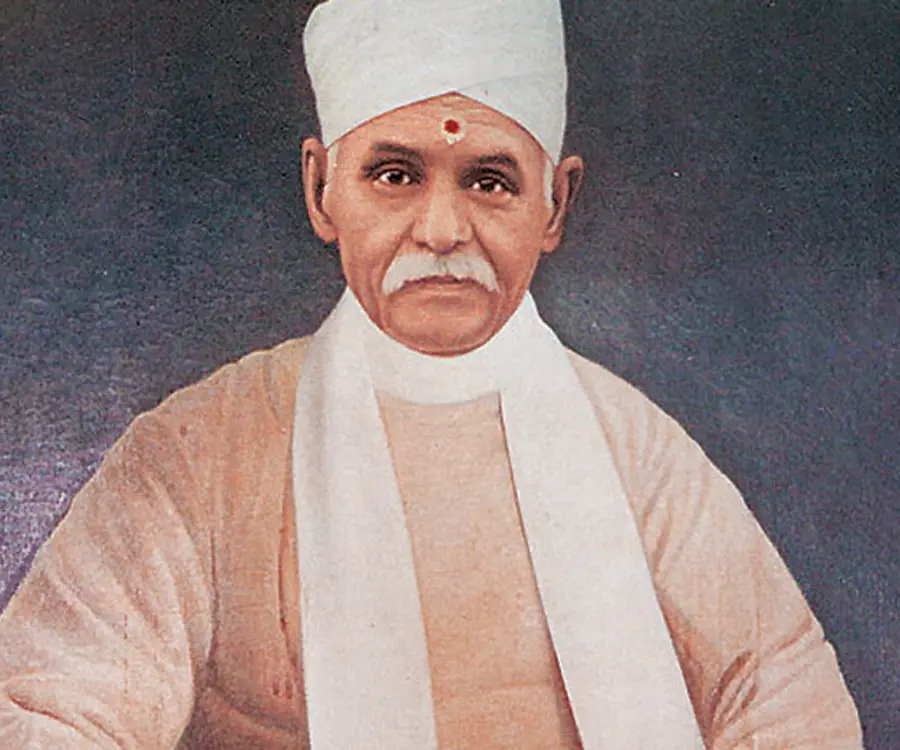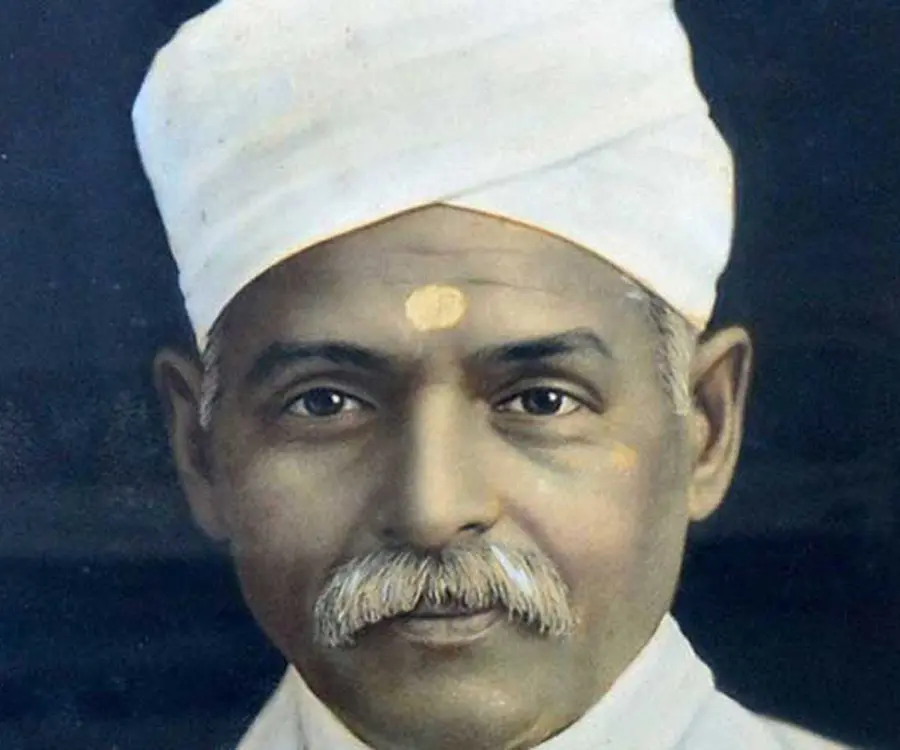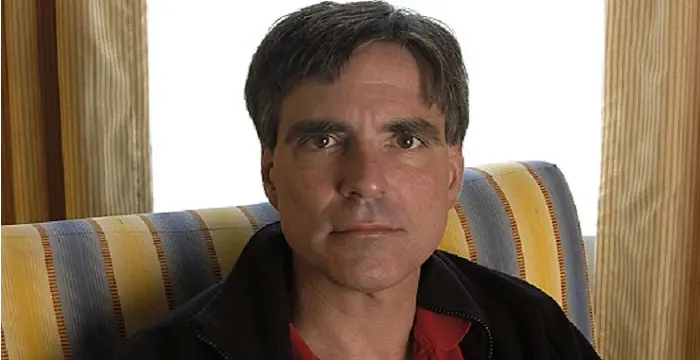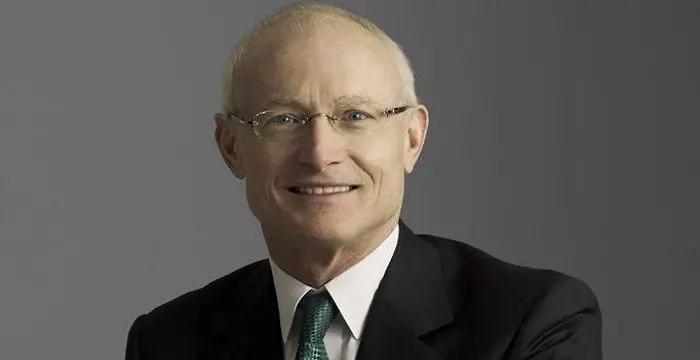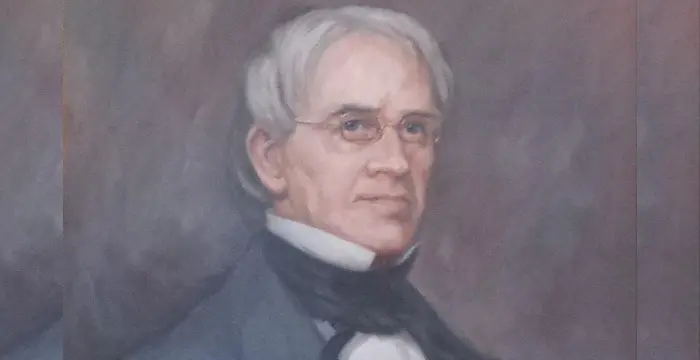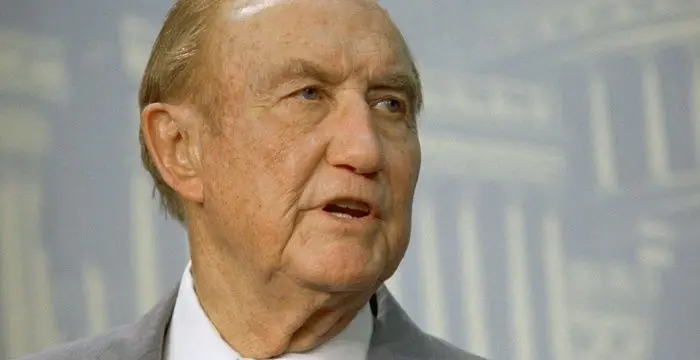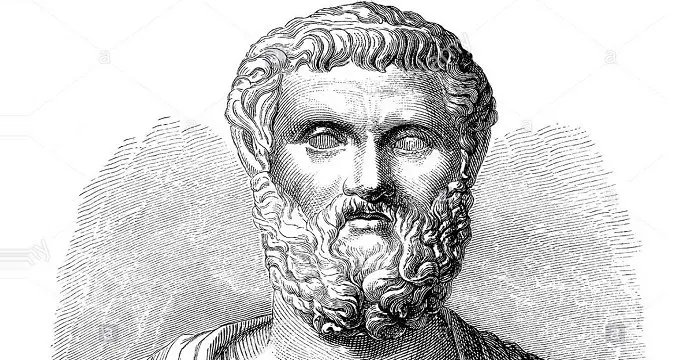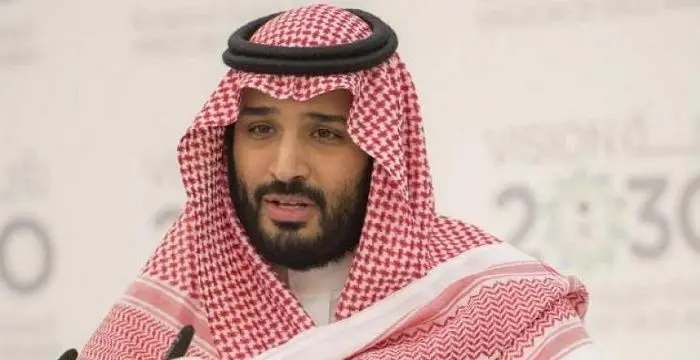Madan Mohan Malaviya - Educationist, Timeline and Childhood
Madan Mohan Malaviya's Personal Details
Madan Mohan Malaviya was a veteran Indian statesman, educationist and independence activist
| Information | Detail |
|---|---|
| Birthday | December 25, 1861 |
| Died on | November 12, 1946 |
| Nationality | Indian |
| Famous | Leaders, Political Leaders, Educators, Educationist, Politician |
| Spouses | Kumari Devi |
| Known as | Mahamana, Pandit Madan Mohan Malaviya |
| Childrens | Govind Malaviya, Ramakant Malaviya |
| Birth Place | Allahabad, India |
| Gender | Male |
| Father | Pandit Brij Nath |
| Mother | Moona Devi |
| Sun Sign | Capricorn |
| Born in | Allahabad, India |
| Famous as | Politician & Educationist |
| Died at Age | 84 |
// Famous Politician
Sebastian Coe
Sebastian Coe is a British former track and field athlete turned politician. This biography of Sebastian Coe provides detailed information about his childhood, life, achievements, works & timeline.
Stephen Lewis
Stephen Lewis is a Canadian politician, broadcaster, diplomat and professor. This biography profiles his childhood, career, works, life, achievements and timeline.
Oswald Mosley
Sir Oswald Ernald Mosley was a British politician known for his pro-fascist beliefs. This biography profiles his childhood, family, personal life, opinions, career, etc.
Madan Mohan Malaviya's photo
Who is Madan Mohan Malaviya?
‘Bharat Ratna’ Madan Mohan Malaviya was a veteran Indian statesman, educationist and independence activist. Decades long political career of Malaviya saw him serving as President of the ‘Indian National Congress’ four times. He is remembered as founder of the largest residential university of Asia and one of the largest in the world, the ‘Banaras Hindu University’ (BHU). For almost two decades he served as Vice Chancellor of the BHU, the university with departments in sciences, medical, engineering, technology, law, agriculture, arts and performing arts with strength of over 35,000 students. He was a proponent of Hindu nationalism and remained a member of ‘Hindu Mahasabha’, serving as President in two of its special sessions held in Gaya and Kashi. He founded the ‘Ganga Mahasabha’ in Haridwar. Malaviya and other imminent Indian personalities established ‘Scouting in India’ as an overseas branch of the ‘Scout Association’ of the UK. He was the founder of ‘The Leader’ an English-newspaper published from Allahabad that gradually became influential. People used to address him as Pandit Madan Mohan Malaviya out of respect. He was fondly called Mahamana, a title conferred by Mahatma Gandhi. He popularised the slogan "Satyameva Jayate" (Truth alone will triumph) from the ‘Mundakopanishad’ expressing that it should be the slogan for the country.
// Famous Educationist
Randy Pausch
Randolph Frederick "Randy" Pausch was an American professor at Carnegie Mellon University (CMU) in Pittsburgh. Check out this biography to know about his childhood, family life, achievements and other facts about his life.
Childhood & Early Life
He was born on December 25, 1861, in Allahabad, India, in a Brahmin family to Pandit Brij Nath and his wife Moona Devi as their fifth child among five sons and two daughters.
His ancestors were Sanskrit scholars originally hailing from Malwa, Madhya Pradesh, hence called the ‘Malaviyas’, while their actual surname was Chaturvedi.
His father, a Sanskrit scholar, was an exceptional Kathavachak, who recited the stories from ‘Srimad Bhagavat’. Young Malaviya also aspired to become a Kathavachak like his father.
His elementary education began in Sanskrit at five years of age. He completed his primary education from ‘Dharma Gyanopadesh Pathshala’ of Pandit Hardeva and thereafter studied in a school run by ‘Vidha Vardini Sabha’.
Thereafter he studied at 'Allahabad Zila School’, an English medium school. Here he began to write poems with pseudonym ‘Makarand’, which were later published during 1883-84 in ‘Harischandra Chandrika’ magazine. His articles on contemporary and religious subjects were published in ‘Hindi Pradeepa’.
In 1879 he completed his matriculation from ‘Muir Central College’ (presently the ‘Allahabad University’).
As his family was going through a financial crisis, the Principal of ‘Harrison College’ helped him with a monthly scholarship with which he studied at the ‘University of Calcutta’ and earned a B.A. degree.
He wanted to pursue masters in Sanskrit, but the financial condition of his family forced him to take up a job of a teacher at the Government high school in Allahabad in July 1884, drawing a monthly salary of Rs. 40.
Career
While attending the second ‘Indian National Congress’ session in Calcutta in December 1886, he expressed his views on representations in Councils and impressed Dadabhai Naoroji, chairman of the session as also Raja Rampal Singh of Kalakankar estate (Pratapgarh District). Singh was in search of an able editor who could turn his Hindi weekly, ‘Hindustan’ into a daily.
Malaviya accepted the offer of Singh and left his school job to join the paper as its editor in July 1887. He served the position for 2 ½ years following which he returned to Allahabad to study Law.
While studying Law, in 1889 he started working as editor of English daily, ‘Indian Opinion’. His other journalistic endeavors included founding of Hindi weekly, ‘Abhyudaya’ in 1907 and serving as its editor, later transforming it to a daily in 1915; founding the English newspaper ‘Leader’ (1909), serving as its Editor (1909-11) and later as President (1911-19); starting Hindi paper ‘Maryada’ (1910); acquiring and thus saving ‘Hindustan Times’ from dying out in 1924 with the aid of M. R. Jayakar, Lala Lajpat Rai and Ghanshyam Das Birla and serving as its Chairman (1924-46); launching Hindi edition of ‘Hindustan Times’ called ‘Hindustan’ in 1936.
After earning his L.L.B., he began to practice in Allahabad District Court in 1891.
In 1893 he started practicing in Allahabad High Court.
He was elected the president of the 'Indian National Congress’ in In 1909 and 1918. A moderate leader, belonging to the ‘soft faction’ of the Congress led by Gopal Krishna Gokhale, Malaviya was against one of the main features of the ‘Lucknow Pact’ of 1916 that mentioned separate electorates for Muslims.
To dedicate fully to the cause of social work and education, Malaviya relinquished his well set up law practice in 1911 and vowed to lead a life of a Sanyasi. However in 1924, following the Chauri-chaura incident of 1922 he appeared before the Allahabad High Court to defend the 177 freedom fighters, who were sentenced to be hanged by the Sessions Court, and became successful in getting 156 acquitted.
Annie Besant, a leading British women's rights activist, socialist, theosophist, orator and writer, who founded the ‘Central Hindu College’ (1898), met Malaviya in April 1911. Both of them decided to set up a Hindu University at Varanasi. They came in unison of the pre-requisite of the Indian government to include ‘Central Hindu College’ as part of the upcoming University.
This is how the largest residential University of Asia, the ‘Banaras Hindu University’ was formed in 1916 after passing a Parliamentary legislation, the ‘B.H.U. Act 1915. He remained Vice-Chancellor of the University till 1939.
In 1912 he became a member of the ‘Imperial Legislative Council’ and continued to be so when it was transformed into the ‘Central Legislative Assembly’ in 1919, his membership remained till 1926.
He got associated with Jawaharlal Nehru and Lala Lajpat Rai, and several others in 1928 to oppose the ‘Simon Commission’ and on May 30, 1932, he published a manifesto insisting to concentrate on the ‘Buy Indian’ movement in the country.
In 1931 he attended the ‘Second Round Table Conference’ as a delegate.
He presided the 1932 session of the Congress in Delhi. Malaviya played a major role in the Non-cooperation movement, although opposed Congress' participation in the Khilafat movement. On April 25, 1932, around 450 Congress volunteers along with Malaviya were arrested in Delhi.
The ‘Poona Pact’ agreement was signed between him and Dr. Ambedkar on September 25, 1932. It provided reserve seats for the depressed classes (denoting the untouchables among Hindus) in the general electorate in the Provincial legislatures, instead of forming separate electorate.
He became the President of Congress for the fourth time in Calcutta in 1933.
Disenchanted with the ‘Communal Award’, he split away from the Congress along with Madhav Shrihari Aney and the duo founded ‘Congress Nationalist Party’ in 1934. That year the party won 12 seats in elections to the central legislature.
In 1937 he retired from active political life.
Awards & Achievements
On December 24, 2014, he was posthumously bestowed the highest civilian honour of India, the ‘Bharat Ratna’, a day ahead of his 153rd Birth Anniversary.
Personal Life & Legacy
In 1878 he married Kumari Devi of Mirzapur and had two sons Ramakant Malaviya and Govind Malaviya.
He passed away in Varanasi on November 12, 1946.
Trivia
Many places, institutes, hostel campuses were named after him like the Malviya Nagar in Delhi, Jaipur, Lucknow and Allahabad among others; ‘Madan Mohan Malaviya University of Technology’ in Gorakhpur; and ‘Malaviya National Institute of Technology’ at Jaipur.
The train ‘Mahamana Express’, launched on January 22, 2016, is named after him.
// Famous Educators
Maria Montessori
Maria Montessori was a physician and educator who developed the approach of Montessori education. This biography of Maria Montessori provides detailed information about her childhood, life, achievements, works & timeline.
Michael Porter
Michael Porter is an economist, researcher, author, advisor, speaker and teacher. This biography profiles his childhood, career, academic contribution, works, life, achievements and timeline.
Horace Mann
Horace Mann was an American education reformer and politician. This biography of Horace Mann profiles his childhood, life, works, achievements and timeline.
Madan Mohan Malaviya's awards
| Year | Name | Award |
|---|---|---|
Other | ||
| 0 | Bharat Ratna (2015) | |
Madan Mohan Malaviya biography timelines
- // 25th Dec 1861He was born on December 25, 1861, in Allahabad, India, in a Brahmin family to Pandit Brij Nath and his wife Moona Devi as their fifth child among five sons and two daughters.
- // 1878In 1878 he married Kumari Devi of Mirzapur and had two sons Ramakant Malaviya and Govind Malaviya.
- // 1879In 1879 he completed his matriculation from ‘Muir Central College’ (presently the ‘Allahabad University’).
- // 1883 To 1884Thereafter he studied at 'Allahabad Zila School’, an English medium school. Here he began to write poems with pseudonym ‘Makarand’, which were later published during 1883-84 in ‘Harischandra Chandrika’ magazine. His articles on contemporary and religious subjects were published in ‘Hindi Pradeepa’.
- // Jul 1884He wanted to pursue masters in Sanskrit, but the financial condition of his family forced him to take up a job of a teacher at the Government high school in Allahabad in July 1884, drawing a monthly salary of Rs. 40.
- // Dec 1886While attending the second ‘Indian National Congress’ session in Calcutta in December 1886, he expressed his views on representations in Councils and impressed Dadabhai Naoroji, chairman of the session as also Raja Rampal Singh of Kalakankar estate (Pratapgarh District). Singh was in search of an able editor who could turn his Hindi weekly, ‘Hindustan’ into a daily.
- // Jul 1887Malaviya accepted the offer of Singh and left his school job to join the paper as its editor in July 1887. He served the position for 2 ½ years following which he returned to Allahabad to study Law.
- // 1891After earning his L.L.B., he began to practice in Allahabad District Court in 1891.
- // 1893In 1893 he started practicing in Allahabad High Court.
- // 1898 To Apr 1911Annie Besant, a leading British women's rights activist, socialist, theosophist, orator and writer, who founded the ‘Central Hindu College’ (1898), met Malaviya in April 1911. Both of them decided to set up a Hindu University at Varanasi. They came in unison of the pre-requisite of the Indian government to include ‘Central Hindu College’ as part of the upcoming University.
- // 1909 To 1918He was elected the president of the 'Indian National Congress’ in In 1909 and 1918. A moderate leader, belonging to the ‘soft faction’ of the Congress led by Gopal Krishna Gokhale, Malaviya was against one of the main features of the ‘Lucknow Pact’ of 1916 that mentioned separate electorates for Muslims.
- // 1912 To 1919In 1912 he became a member of the ‘Imperial Legislative Council’ and continued to be so when it was transformed into the ‘Central Legislative Assembly’ in 1919, his membership remained till 1926.
- // 1916This is how the largest residential University of Asia, the ‘Banaras Hindu University’ was formed in 1916 after passing a Parliamentary legislation, the ‘B.H.U. Act 1915. He remained Vice-Chancellor of the University till 1939.
- // 1928 To 30th May 1932He got associated with Jawaharlal Nehru and Lala Lajpat Rai, and several others in 1928 to oppose the ‘Simon Commission’ and on May 30, 1932, he published a manifesto insisting to concentrate on the ‘Buy Indian’ movement in the country.
- // 1931In 1931 he attended the ‘Second Round Table Conference’ as a delegate.
- // 25th Apr 1932He presided the 1932 session of the Congress in Delhi. Malaviya played a major role in the Non-cooperation movement, although opposed Congress' participation in the Khilafat movement. On April 25, 1932, around 450 Congress volunteers along with Malaviya were arrested in Delhi.
- // 25th Sep 1932The ‘Poona Pact’ agreement was signed between him and Dr. Ambedkar on September 25, 1932. It provided reserve seats for the depressed classes (denoting the untouchables among Hindus) in the general electorate in the Provincial legislatures, instead of forming separate electorate.
- // 1933He became the President of Congress for the fourth time in Calcutta in 1933.
- // 1934Disenchanted with the ‘Communal Award’, he split away from the Congress along with Madhav Shrihari Aney and the duo founded ‘Congress Nationalist Party’ in 1934. That year the party won 12 seats in elections to the central legislature.
- // 1937In 1937 he retired from active political life.
- // 12th Nov 1946He passed away in Varanasi on November 12, 1946.
- // 24th Dec 2014On December 24, 2014, he was posthumously bestowed the highest civilian honour of India, the ‘Bharat Ratna’, a day ahead of his 153rd Birth Anniversary.
- // 22nd Jan 2016The train ‘Mahamana Express’, launched on January 22, 2016, is named after him.
// Famous Political Leaders
Edi Rama
Edi Rama is the current Prime Minister of Albania. Check out this biography to know about his childhood, life, achievements, works & timeline.
Khalifa bin Zayed Al Nahyan
Sheikh Khalifa bin Zayed Al Nahyan is the current President of the United Arab Emirates (UAE). Check out this biography to know about his birthday, childhood, family life, achievements and fun facts about him.
Leo Varadkar
Cam Leo Varadkar is the current Taoiseach—the Prime Minister—of the Republic of Ireland. Check out this biography to know about his childhood, family life, achievements and other facts about his life.
Strom Thurmond
Strom Thurmond was an American politician, who represented the state of South Carolina in the United States senate for 48 years.
Solon
Solon was an Athenian lawmaker, poet and politician. He is considered as one of the ‘Seven Wise Men’ in Greek culture. This biography provides detailed information about his childhood, life, career, works, achievements and timeline.
Mohammed bin Salman
Mohammed bin Salman is the Crown Prince of Saudi Arabia and the heir apparent to the throne. Check out this biography to know about his childhood, family life, achievements and other facts about him.
Madan Mohan Malaviya's FAQ
What is Madan Mohan Malaviya birthday?
Madan Mohan Malaviya was born at 1861-12-25
When was Madan Mohan Malaviya died?
Madan Mohan Malaviya was died at 1946-11-12
Where was Madan Mohan Malaviya died?
Madan Mohan Malaviya was died in Varanasi, UP, India
Which age was Madan Mohan Malaviya died?
Madan Mohan Malaviya was died at age 84
Where is Madan Mohan Malaviya's birth place?
Madan Mohan Malaviya was born in Allahabad, India
What is Madan Mohan Malaviya nationalities?
Madan Mohan Malaviya's nationalities is Indian
Who is Madan Mohan Malaviya spouses?
Madan Mohan Malaviya's spouses is Kumari Devi
Who is Madan Mohan Malaviya childrens?
Madan Mohan Malaviya's childrens is Govind Malaviya, Ramakant Malaviya
Who is Madan Mohan Malaviya's father?
Madan Mohan Malaviya's father is Pandit Brij Nath
Who is Madan Mohan Malaviya's mother?
Madan Mohan Malaviya's mother is Moona Devi
What is Madan Mohan Malaviya's sun sign?
Madan Mohan Malaviya is Capricorn
How famous is Madan Mohan Malaviya?
Madan Mohan Malaviya is famouse as Politician & Educationist

